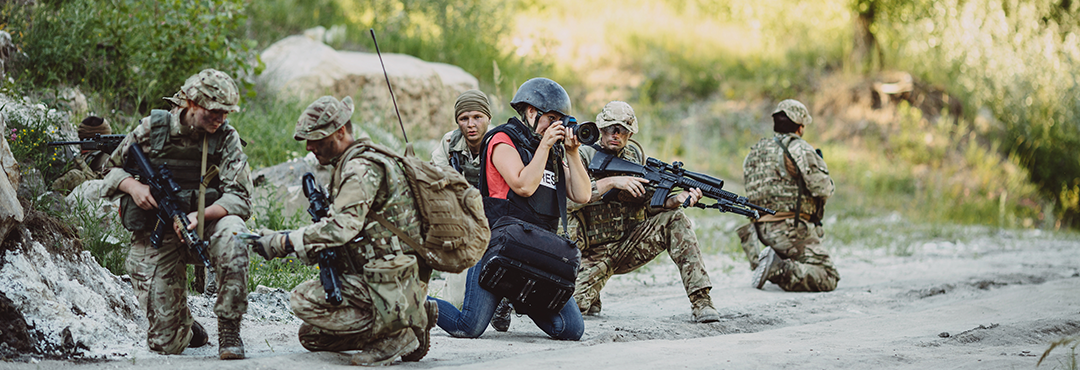The Essential Safety Checklist for Hostile Environments
When operating in hostile environments, your safety and well-being become paramount.
Whether responding to armed conflicts, natural disasters, or travelling for work purposes, you must be prepared to face challenging and hazardous situations. HET plays a pivotal role in preparing you for these demanding environments.
Be Prepared with HET
When preparing to navigate a hostile environment, where risk levels are elevated, it is essential to be prepared, should the unthinkable happen. In areas where law and order are not fully established negotiating such territories effectively demands a willingness to adapt and embrace different rules. Negotiating such territories demands a willingness to adapt and embrace different rules.
The foremost challenges faced in a hostile environment is the environmental, cultural, and political factors. Should you enter an unknown situation, where you may also be unfamiliar with the local cultures, compounded by environmental and political factors, can leave you to be exposed and vulnerable to hostile attack.
A safety checklist, when operating in hostile environments, is essential for personal and business safety, due to the multitude of risks inherent in such settings. Such a safety checklist serves as a structured guide to systematically assess, mitigate and manage risks. Adhering to specific criteria stops you from becoming complacent, minimising the risks and hazards associated with travelling in hostile environments. Your safety checklist should include:
- Risk Assessment: Identify potential hazards that could pose a threat to your safety and continually assess and update them based on changing conditions.
- Cultural Awareness: Research and understand local customs, traditions and social norms to avoid inadvertent conflicts.
- Political Standings: Stay informed about the political landscape in the region, including potential areas of instability or conflict.
- Communications Plan: Establish clear communication protocols, including backup methods of communication and emergency contacts.
- Trauma First Aid Kit: Include personal medical information and medications, as well as essential first aid items.
- Documentation: Have a colour copy of all your essential documents, including your passport, insurance and visa.
Do Your Training
Effective hostile environment awareness training (HEAT) is an indispensable element in preparing to travel to a hostile environment. Training should be face-to-face, conducted by experienced and proficient professionals who are able to answer relevant questions and elaborate on real-world situations. In-person training bridges the gap between theory and practice, allowing you to witness how the principles can be effectively applied to scenarios. The EDIP approach – Explain, Demonstrate, Imitate and Practice – used in face-to-face HEAT training, ensures you not only understand, but can also apply, the skills learnt. Training contributes to your safety by shedding light on gaps in your knowledge, giving you the confidence to travel to hostile environments safely.
Listen to Professionals
Navigating unfamiliar cultural concepts demands a heightened awareness. You may be familiar with more commonly-known practices, but being able to show consideration for small details and customs between cultures can drastically alter the tone to your benefit when you meet new people. The risks lie in inadvertently doing or saying the wrong thing, unintentionally offending, or missing out on unspoken rules, therefore trusting recommendations from reliable sources adds a layer of certainty.
Engaging with the local customs and building relationships ahead of time can prepare and ensure you are culturally aware of the situation where you are visiting. Speaking to others who have already visited, trusting only who others have trusted and recommended can mitigate risks of acting inappropriately in this new environment.
The resources you use to ensure your safety must be tailored individually, taking into account who you are travelling with, who you are travelling for and why you are travelling. Stakeholders should know what you are doing and where you plan to be so they can monitor and be there for you should something happen. Thorough planning is essential, however, recognising that circumstances can shift unexpectedly and having contingency plans that accommodate the changes is even more important. Redundancy is key – a backup plan or multiple resources can be a lifeline when primary plans fail.
HET: Assuring Your Safety in Hostile Environments
Hostile environment training equips you with the skills and knowledge necessary to navigate hazardous situations securely. By following an essential safety checklist, you can better protect yourself and others around you. From risk assessments to situational awareness and communication protocols, each aspect of our checklist plays a crucial role in ensuring your safety in a hostile environment.
For more information on any of our training courses or to discuss your requirements, contact our team today.




